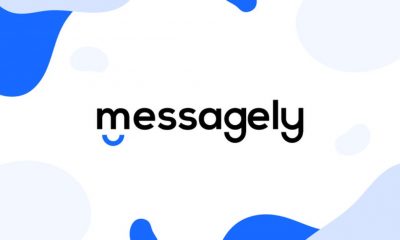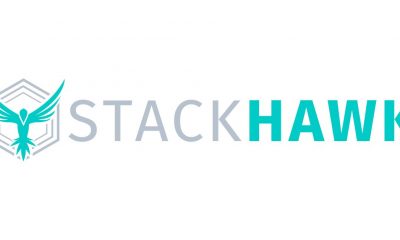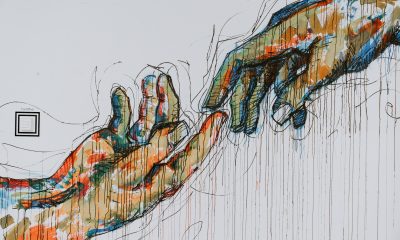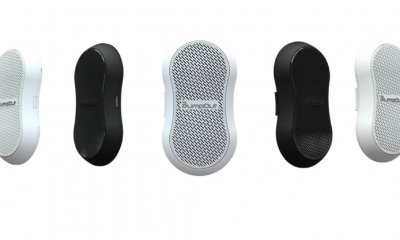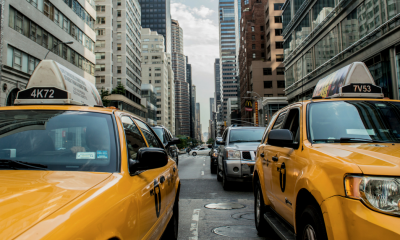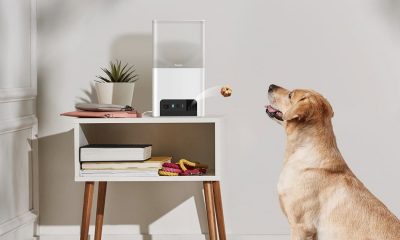Business
Interview: Max Temkin On Cards Against Humanity
Published
6 years agoon
By
Jie Kuang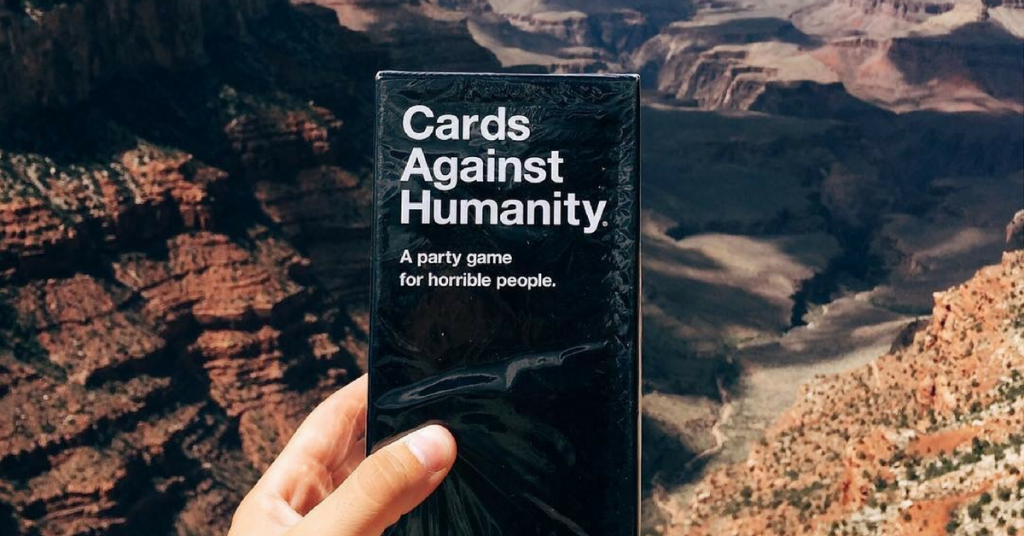

During an exclusive interview with co founder Max Temkin, he tells us about business, Black Friday ideas, and doing things the Cards Against Humanity way. Best known for creating the game, he is also the cofounder of Blackbox, creator of Humans vs. Zombies, Secret Hitler, and Slap .45, and is on the National Finance Committee for Hillary for America. Though involved in politics, he does things a little differently, as you can see with America Votes with Cards Against Humanity. Like a true entrepreneur, the list of projects is endless. He describes himself as just a designer, but to think of him as just that would be foolish. Max Temkin is an inspiration for those aspiring to take their hobbies to the next level.
How did CAH get started?
Max Temkin – I’ve talked about this extensively in other interviews, but basically, the co-creators of Cards Against Humanity have a long history of making games together, and Cards Against Humanity was the first good one we play-tested. We put it out for free and it gained a cult following. Then we did a Kickstarter.
What are your backgrounds?
Max Temkin – I have a philosophy degree and I work on Democratic campaigns and elections. Some of the other Cards Against Humanity co-creators have backgrounds in economics, science, and advertising.
Why did you decide to create dick jokes instead of working in a different field?
Max Temkin – It was mostly a happy accident! We all still have outside interests, though Cards Against Humanity is my biggest project now.
When was your a-Ha moment?
Max Temkin – I’m not sure what that means! A time that sticks out in my memory that I knew Cards Against Humanity was pretty special was when I was play-testing it at college… I had a bunch of friends over in my dorm room, we were playing it and laughing, and more and more people kept coming over and joining. The laughter was contagious, and people kept coming in attracted by the spectacle. I saw that happen and I knew something special was going on.
How has sarcasm benefited your company?
Max Temkin – Not sure how to answer this one. We always try to find something earnest or authentic to make a joke about, and something that makes us laugh.
What is your on-boarding process?
Max Temkin – Is that like when you hire someone? We don’t have a lot of formal procedures. Trin is our events director and is kind of in charge of office morale, so she helps people find their place in the company.
Describe your office culture.
Max Temkin – We have a large open office that we built in Chicago, it’s a co-working space full of our friends… other designers, artists, musicians, podcasters, and weirdos from around the city.
What is the best way to respond to negative feedback?
Max Temkin – I try not to get defensive and rush to defend myself… I usually take a moment to absorb the criticism, and then translate it into something constructive that I can act on. Sometimes people have constructive criticism that I can’t act on, and I just try to make sure that they’re heard.
Who are some influencers that you admire?
Max Temkin – I truly hate thinking of people as “influencers,” thinking like that instrumentalizes all of the relationships in your life and makes them transactional. I don’t know that you can think about other people in terms of being an “influencer” or not, and still view them as honest and emotionally available to you.
What is the biggest lesson you learned since starting CAH?
Max Temkin – It’s been very hard for me to delegate and give work to other people… even when they’re way better than me. Our design director Amy Schwartz is a much better designer than me, the best designer I’ve ever worked with, and I really look up to her. I know that she outshines me in every skill. But it’s still emotionally so difficult to give up the work.
How do you determine a good employee at CAH?
Max Temkin – We look for kind, funny, and well-rounded people who are first good human beings and second good employees. We value a diversity of experience and viewpoint, and whether people have full, real lives outside of work.
What advice would you give to people trying to start their own business?
Max Temkin – Every good business that you admire figured things out for themselves. They forged their own path and came up with their own way of doing things. Apple does things the Apple way. McDonald’s does things the McDonald’s way. Cards Against Humanity does things the Cards Against Humanity way. Reading business advice and blindly following what other people did didn’t get those companies anywhere, and it won’t get you anywhere either. To make a successful company or brand, you need to start from first principles and figure out your own way forward.
What advice can you give people new to crowdfunding?
Max Temkin – Again the whole notion of “giving advice” on crowdfunding is kind of crazy to me. The whole point is to authentically figure out what you’re about and how to connect with other people. Some advice I like from Matthew Frederick’s 101 Things I Learned in Architecture School is that successful designers learn to make design decisions conditionally – that is, with the awareness that they may or may not work out as you continue toward a final solution.
Where do you see yourselves in 5 years?
Max Temkin – Tough question – I have no idea if people will still be playing Cards Against Humanity or care about us at all in five years. For the last five years, I’ve had a personal goal of making one small Kickstarter project a year. Sometimes they’re really small and personal like my Maxistentialism zine. And sometimes they’re huge public projects like my new game Secret Hitler. But I’d like to think that I’ll still be doing that in a year.
How did you come up with 12 Days of Holiday Bullshit?
Max Temkin – We needed to come up with some way to market Cards Against Humanity during the holidays that was funny and still had integrity. The first year we did a holiday stunt, it was a pay-what-you-want pack and we made $70,000, which we donated to charity. We felt like the next year we needed to out-do that. The blind subscription, where you pay us and get a series of mystery gifts in the mail, was a nice escalation. We did that for three years and now we’re taking a break.
How often do you guys visit Hawaii 2?
Max Temkin – I’ve never been! I hear from lots of people who have been to visit, and apparently it’s really nice during the summer.
What do you do with all the dumb ideas that people submit?
Max Temkin – Mostly we use them as kind of raw brainstorming ideas… I don’t think we’ve ever gotten a crowd suggestion that went directly into the game.
What are some Black Friday ideas that didn’t make the cut?
Max Temkin – We probably investigate a hundred ideas that don’t pan out to get to the one that works. The original idea was a $0.01-off coupon, but we ultimately rejected it because we felt that it was still a marketing deal. We always want to do something genuinely surprising and risky. This year’s is going to be a doozy.
How did you come up with the idea for The Bigger Blacker Box?
Max Temkin – People asked us for a big box that held all the cards, and over my strong objections, we decided to give them what they wanted. This was the best product we could design that fit those needs.
A few Redditors mentioned that they want to send you beer. Has this happened? Have you received anything out of the ordinary?
Max Temkin – We’ve gotten all kinds of crazy gifts and things from people. I love that people feel like they have a relationship with us and want to send us stuff, I think that’s a sign that we’re getting our message out there and our voice is coming through.
Jie writes about influencers and startups in various industries. She is a designer turned techie, and when she is not writing, you can find her in her workshop working on her next big project.

You may like
Business
What’s the Best Creative as a Service? A Guide for Businesses
Published
13 hours agoon
September 3, 2025
Looking for the best creative as a service isn’t a walk in the park. There are factors to consider, making it even more challenging. So to help you decide, here’s a brief guide to the best creative design services out there:
1. Penji
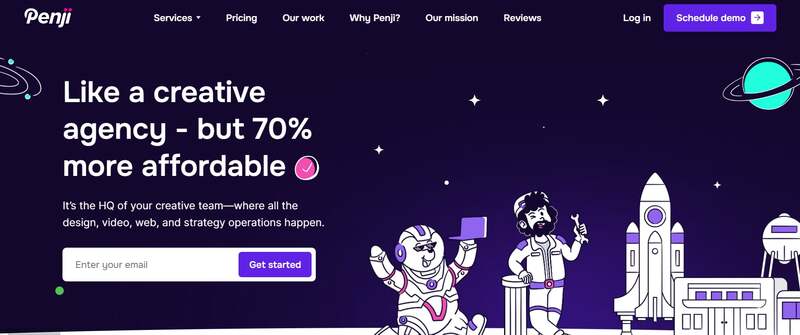
With a team of professional designers who are from the top 2%, Penji tops this list. This assures you of high-quality work on a wide variety of design types. From social media graphics to custom illustrations, they’ve got you covered.
2. Delesign

Another excellent option for creative design services is Delesign. It is a subscription-based design service that provides graphic design and video support. A dedicated designer will be assigned to you to provide updates and accommodate your preferred working hours.
3. Design Pickle
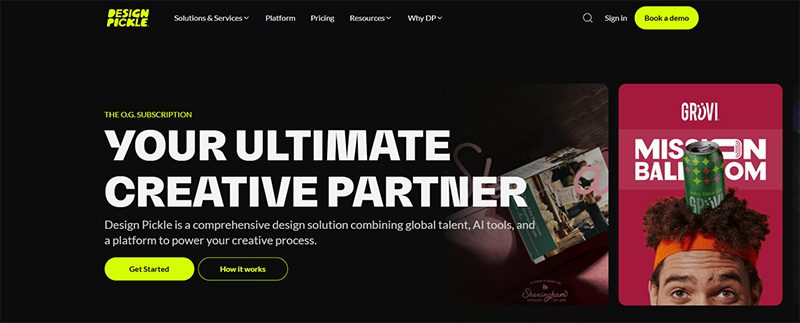
A pioneer in the creative as a service landscape, Design Pickle also offers unlimited graphic design services. It is a popular choice for many startups, agencies, and marketers. Its reliable output, dedicated designers, and wide range of services make it a wise business investment.
4. Undullify

Specializing in small graphic design tasks, Undullify is a highly recommended creative as a service platform. It is budget-friendly, offering pricing plans that are suitable for startups and businesses with limited budgets. This is the ideal creative design service for those who are always needing quick fixes.
5. Flocksy

As a full-service creative agency, Flocksy offers unlimited graphic design services. Included in its plans are a wide array of design types, along with video editing, copywriting, and web development services. Like Penji, it has a team of vetted designers that assures quality work.
Conclusion
This list of the best creative as a service platforms won’t disappoint. All you need to do now is choose which one fits your needs and explore their free trials.
Business
How a CEO Refused Layoffs and Still Cut Costs by 70%
Published
2 weeks agoon
August 21, 2025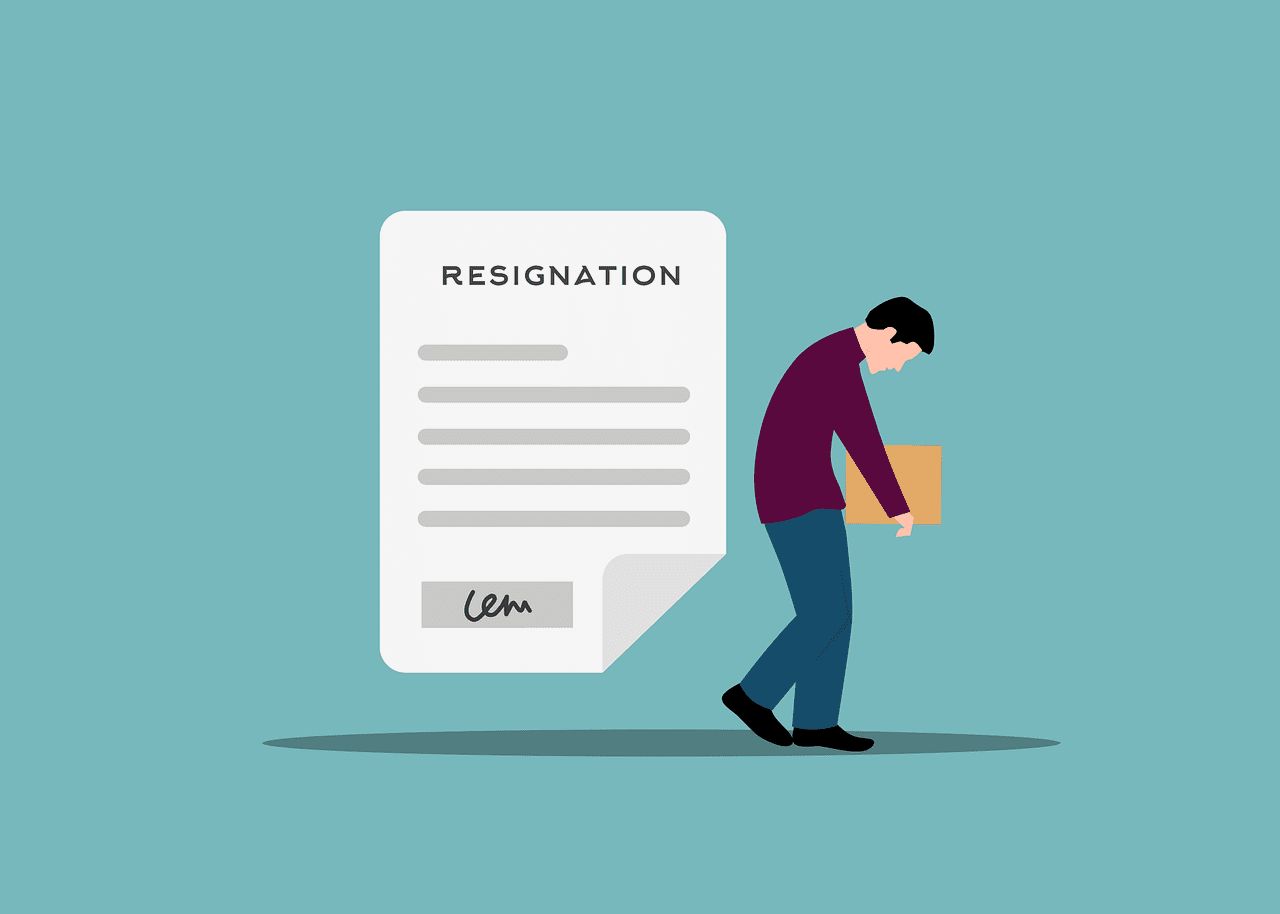
Why Cutting People Isn’t Always the Answer
When there’s a financial issue, companies cut people. According to Deloitte in 2025, 84% of companies, when faced with a crisis, implement layoffs as a first step. But should they? Sarah Jennings says no.
BrightWave Digital is a marketing company with 42 employees owned by CEO Sarah Jennings. Earlier this year, her company was in trouble. Within 6 months, revenue dropped nearly 50%. Costs were rising. Sarah’s trusted mentors were encouraging her to lay people off.
But she refused.
Sarah believes her employees are the lifeblood of her business. Instead, she evaluated where money was being spent and made adjustments in other areas. After diving deep into the company’s money flow, her findings were extraordinary—and it turned her company around.
Where Is The Money Going?
Sarah started with a review of all expenses. What is BrightWave spending money on every month? 3 areas stood out:
- Graphic design costs $18K/month
- Marketing efforts cost $12K/month
- Landing page development costs $9.5K/month
These three expenditures took over 65% of her monthly budget. Without action soon, she’d be out of business in one quarter’s time. “I realized that my biggest expenses were not the staff, but the platforms and services we were paying every month to get things done,” she said. “This gave me hope. Maybe we can solve this problem without losing an employee.”es we used to get work done. That gave me hope. Maybe we could fix this without losing anyone.”
Step 1: Reduce Graphic Design Spend with Penji

BrightWave spent a significant amount of money on freelance designers and in-house designers. While the work was always satisfactory, the payments fluctuated. Last-minute designs due to client requests multiplied the graphic design monthly charges up to four times some months.
Sarah turned to Penji, a flat-rate graphic design service starting at $499/month. Penji offered her and her team access to its in-house team, able to do anything from social media graphics to PowerPoint decks. No hidden fees, no per-project charges—just a flat, monthly fee.
The results were:
- Design expense went down from $18K to $4.5K/month
- Turnaround time went from 5 days to 1-2 days
- Consistency improved across all designed tasks
“The design work with Penji became predictable because we knew what we had to spend and got much more done quicker,” Sarah said.
Business Owner Tip: If your design needs fluctuate month over month, a flat-rate service will save you time and money. Pay attention to how your service is used to maximize your benefit.
Pros: Predictable costs, quick turnaround, unlimited submissions.
Cons: Favors digital work over personal, creative collaboration.
Step 2: Automate Ad Spend with Adaptify
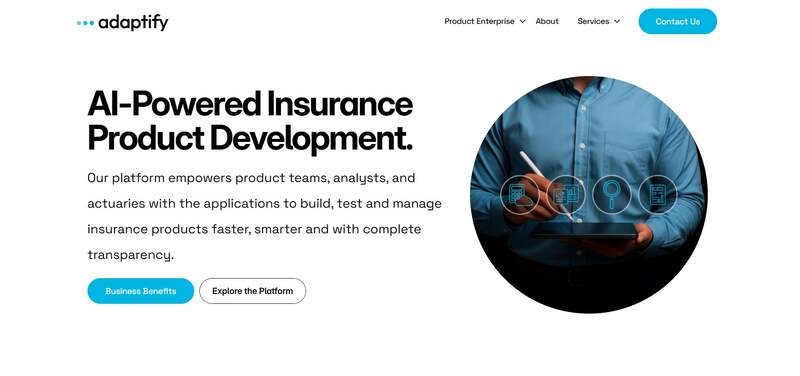
This could be another administrative expense challenge with manual ad spending management. The marketing team would spend hours testing ads, modifying budgets, and assessing what would work; error results meant lost, unreported income.
For $299/month, Sarah used Adaptify, an AI service that manages ad spend. Adaptify automatically adjusted spending amounts, targeted audiences, and rotated effective creatives—24/7. No human on Sarah’s team could put in that amount of time.
Results included:
- Ad spending decreased by 35%
- Return on investment grew by 28% per campaign
- Her marketing team could prioritize creative goals instead of mundane tasks
“Adaptify does the work of 3 specialists; it pays for itself almost immediately,” Sarah said.
Business Owner Tip: If you deal with time-consuming functions, consider automated services. While AI may never replace creativity, it can alleviate mundane tasks that suck your employees’ time.
Pros: Lowers costs; increases results; saves employee time.
Cons: Needs initial set-up and supervision.
Step 3: Use Flowpages for Faster Landing Pages
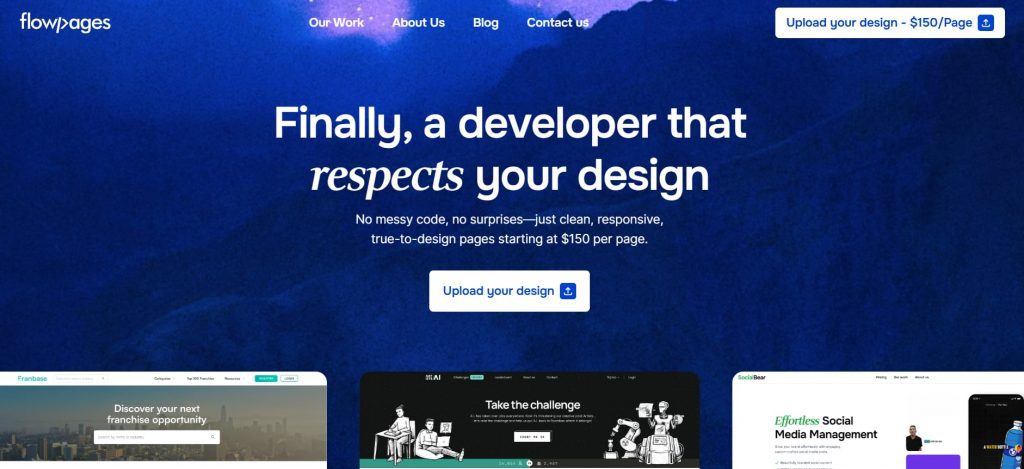
BrightWave hires freelancers for client landing page work. Each landing page costs between $800-$1,000 and takes several weeks to develop. This delays campaigns and frustrates clients.
For $79/month, Sarah used Flowpages, a drag-and-drop landing page creator. Now her in-house marketers can develop their landing pages in a matter of hours.
The results were:
- Landing page expenses decreased by 90%
- Campaigns go live four times faster
- Clients reported quicker turnaround and improved results.
“Flowpages eliminated one of our biggest bottlenecks,” Sarah explained. “We can facilitate client requests quickly instead of leaving them without a page for weeks.”
Business Owner Tip: Speed is crucial! The faster you can get campaigns up and running, the more customer satisfaction and revenue you’ll see.
Pros: Cheap, easy implementation, quick turnaround time.
Cons: Limited options for lengthy, elaborate custom pages.
The Big Picture: 70% Savings Without Layoffs
After implementing these three tools within six months, here’s how BrightWave fared:
- Graphic design costs: down 75%
- Ad management costs: down 65%
- Landing pages: down 90%
Overall operating expenses decreased by 70%, and all 42 employees kept their jobs. By Q3 2025, profitability came back, as did new client contracts due to sped-up deliverables and increased efficiencies.
“It’s because of technology that we could lower costs without decreasing headcounts,” Sarah concluded. “Now we’re running more efficiently than before.”
What Can You Learn?
What Sarah did is repeatable in any business. Here’s how:
- Look at your biggest expenses. Find out where your money truly goes monthly.
- Use flat-rate services. Services like Penji will create predictable and scalable budgets.
- Automate everything. Services like Adaptify save time and provide better ROIs.
- Empower your team. Services like Flowpages help your employees do more without additional spending.
- Assess regularly. Sarah didn’t just implement constantly; she tracked success to keep focus on her goal.
Cutting costs doesn’t mean cutting people. With the right approaches to resources and strategy implementation, you can cut costs and maintain your workforce while creating a better company for the future.
Want to read more success stories? Check out OwnersMag.com for tangible tips and resources from successful entrepreneurs.
Business
7 Effective Ways to Improve at Networking and Grow Your Brand
Published
2 weeks agoon
August 19, 2025
Believe it or not, networking works. If you want to grow your business, you need to connect with people and apply networking tips – whether in face-to-face meetings, hybrid events, or online meetings. And when you want networking to work for you, you must be pushy and assertive but polite.
Read here to know the ways to improve at networking:
1. Identify Your Goals

The first thing you need to do is to determine what you want to get out of the task. Ask yourself, what am I looking for? Once you understand your goals and objectives, it’s easier to identify which events to go to. This way, you can find which ones are better aligned with your business to get more productive results. This will also assure you that your efforts won’t go to waste.
2. Research the Events
Once you determine your goals and line up a few events to go to, do a bit of research. Try to get as much data about them as possible. It is also highly recommended that you get to know the people attending these events. If you see a company you’re interested in, you should find out more about it before going.
In 2025, research isn’t limited to physical events. Many networking opportunities now happen online or in hybrid formats. Before joining, check if the event has a digital platform or app where you can view the agenda, profiles of attendees, and discussion threads. Preparing your LinkedIn profile or digital business card in advance will make it easier to connect with others, even virtually. Taking the time to engage in pre-event online conversations or forums can also help you stand out and build rapport before you meet people in person.
3. Wear the Appropriate Clothing
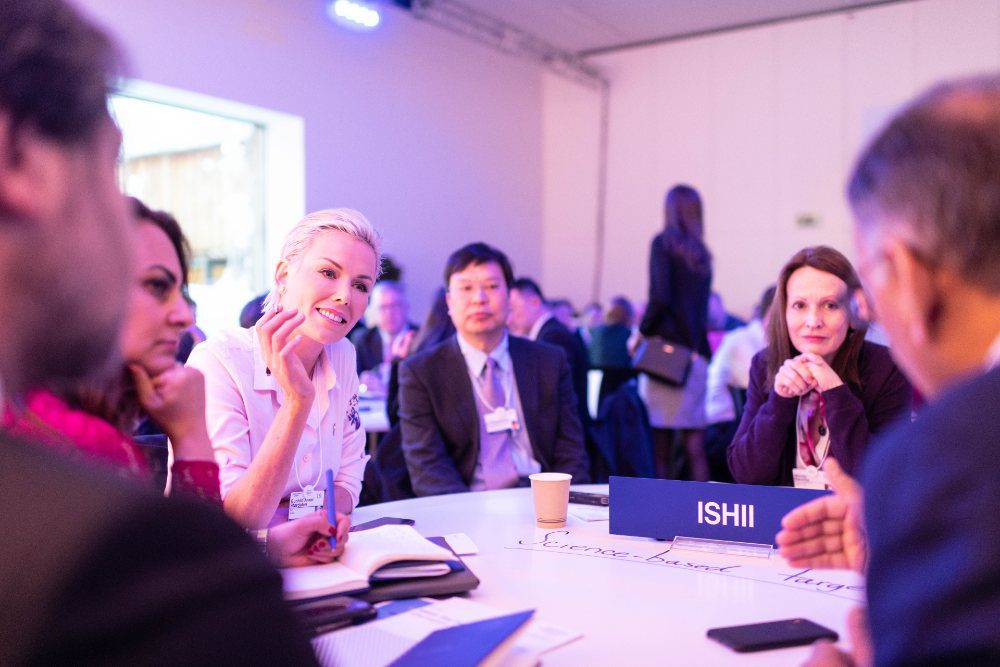
They say, “dress to impress,” and this rings true when attending networking events. Choose clothes that will make you feel comfortable while suitably dressed for the occasion. You can wear bright-colored clothes for a casual event and be the ice-breaker. Or add an accessory that can be a conversation starter. This way, socializing becomes more effortless and you will get more people to network with.
One of the ways to improve at networking in terms of fashion is to focus not just on formality, but on authenticity and sustainability. Many professionals now prefer smart-casual looks that reflect their personal brand while also considering eco-friendly or minimalist fashion choices.
For hybrid or online events, remember that your on-screen presence matters too: choose solid colors that look good on camera, avoid overly busy patterns, and ensure good lighting. Dressing in a way that aligns with your values and professional identity will make you more memorable in both physical and virtual spaces.
4. Practice Makes Perfect
It pays to rehearse what you’ll say to people about your company. You can stand in front of a mirror and practice your pitch so you won’t have to forget an important detail. Remember to include your achievements to make them see how your business will help them improve theirs. A little bit of humble brag will go a long way.
5. Create a Killer Business Card

There will be exchanges of business cards at these events, so make sure that yours will stand out. There are many websites you can go to where you can design your own. Ensure that all pertinent data is on it, so people aren’t left hanging. In addition, make sure that your design will grab attention and won’t have the card end up in the trash bin.
These days, business cards aren’t just physical, but digital too. Many professionals now use QR codes, NFC-enabled cards, or LinkedIn QR sharing to exchange details instantly. Having a sleek digital business card or profile ready ensures you’re remembered even after the event ends. For in-person events, a thoughtfully designed physical card still makes an impression, but pairing it with a scannable digital version gives your contacts more ways to connect. This hybrid approach prevents your information from being lost and makes follow-ups easier.
6. Be Prepared
Also included in the best ways to improve at networking is to set yourself at ease and relax, especially if it’s going to be a long event. Get your socializing skills warmed up by getting a drink, if applicable. This can also set the mood for the event to help you start talking to people. Once you get the conversation going, you should engage in active listening.
As much as you want people to absorb what you’re saying, you should do the same. Allot a time for each person you talk to and stick to that time. Then, excuse yourself politely to start conversing with other people. Hand over your business card and move on to the next prospect.
Don’t worry about offending people; many networking event attendees understand the transactional nature of them. Give them a promise to follow up and end the conversation.
7. Follow the Best Practices
After you go to one event, analyze your moves and try to make a pattern of what worked. This can help you avoid mistakes such as wasting your time with one company and other similar situations. Also, think of the best lines that will quickly convey your message. Think of networking as speed dating, so arm yourself with the best pickup lines.
In 2025, best practices go beyond clever one-liners. Many networking platforms now use AI-powered apps that track who you’ve met, remind you to follow up, and even suggest conversation starters. After events—whether in-person or virtual—take time to review not just who you spoke with but also how you engaged online, such as LinkedIn comments, virtual chatrooms, or community follow-ups.
One of the most important ways to improve at networking is to focus on building authentic, long-term connections rather than just rapid-fire introductions. Documenting key insights digitally will help you refine your approach for the next event and create a more intentional networking strategy.

What’s the Best Design as a Service? Find Your Match

What’s the Best Creative as a Service? A Guide for Businesses

Top 10 Pet Tech Products That Redefine How We Care for Pets

What’s the Best Design Subscription Service? Here’s What to Know

FN Meka, the world’s first AI rapper, gets booted out by record label

Top 10 Powerful Chatbot Platform Builders for 2025

10 Influencer Marketing Tools to Garner More Followers

Top 10 Pet Tech Products That Redefine How We Care for Pets

FN Meka, the world’s first AI rapper, gets booted out by record label

Top 10 VPNs 2022 to Consider

Top 10 Powerful Chatbot Platform Builders for 2025

10 Influencer Marketing Tools to Garner More Followers

How a CEO Refused Layoffs and Still Cut Costs by 70%

What’s the Best Design Subscription Service? Here’s What to Know
Trending
- Technology2 days ago
Top 10 Pet Tech Products That Redefine How We Care for Pets
- Entertainment5 days ago
FN Meka, the world’s first AI rapper, gets booted out by record label
- Top 102 days ago
What’s the Best Design Subscription Service? Here’s What to Know
- Business13 hours ago
What’s the Best Creative as a Service? A Guide for Businesses
- Uncategorized9 hours ago
What’s the Best Design as a Service? Find Your Match


